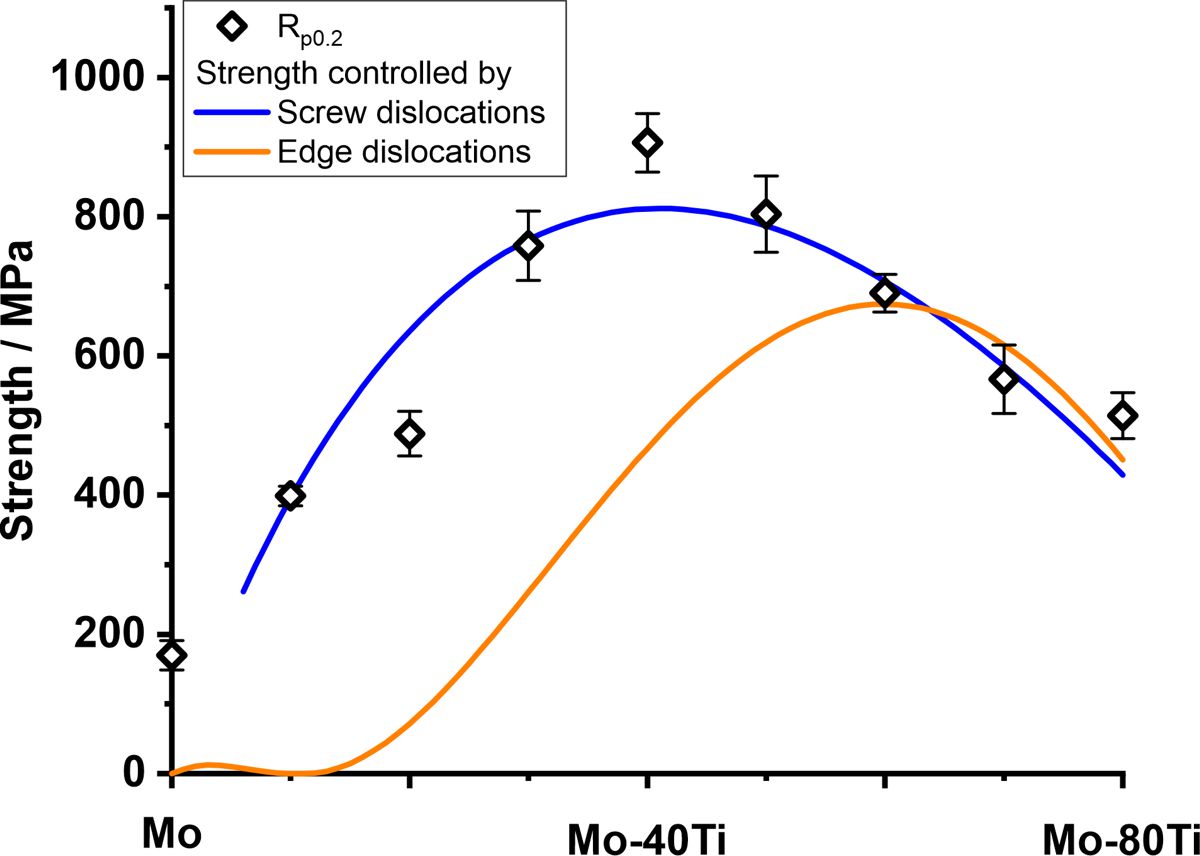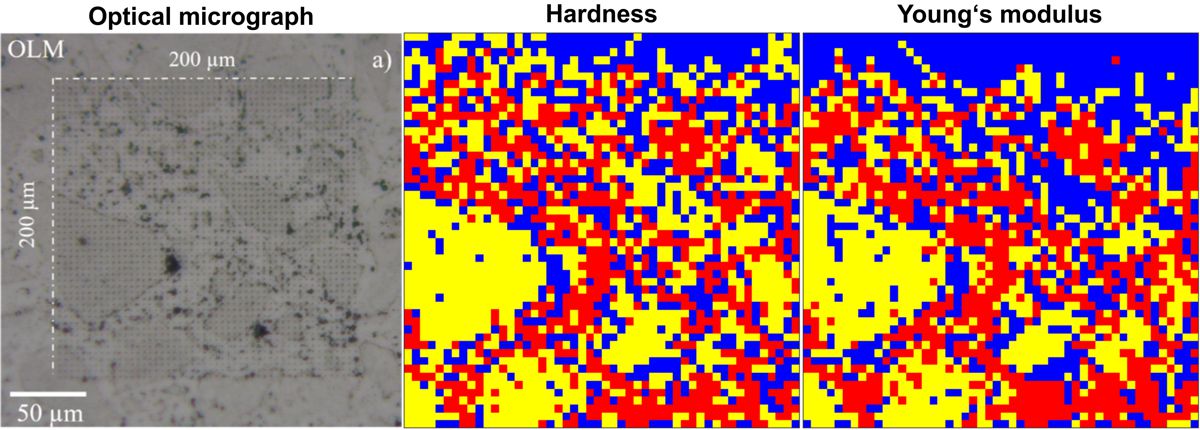Multiscale mechanical characterization and modelling of deformation mechanisms in Mo-based solid solutions
Motivation
The need for alloys in highly specialized applications requires more and more elaborate alloy compositions. Simlutaneously, due to the development of high-entropy alloys, the number of possible alloy compositions increased also significantly. Instead of incremental improvement of already existing alloys, compositional design should be led only by the targeted properties. To accomplish this goal, a comprehensive theoretical understanding of compositionally dependent properties is required.
In contrast to established models for body-centered cubic alloys, recent results in high-entropy alloys indicate a significant contribution of edge dislocation motion to yielding. In order to obtain correct yield strength predictions from the models, this observation needs to be investigated more systematically.
This project investigates the deformation mechanisms in (binary) Mo-based solid solutions in order to improve modelling of these mechanisms in the framework of a theory guided alloy design. The focus is laid on the yield strength of these alloys and the dislocation types are identified that control yielding. The reduction to binary solid solutions precludes issues that arise in multicomponent alloys like precipitation or ordering.
Using mechanical characterization from the nanoscale to the macroscopic scale, solid solution strengthening is isolated in these alloys. Using state-of-the-art modelling of solid solution strengthening, contributions of screw and edge dislocations to the yield strength are identified. Based on these results, generalized statements are derived for alloy modelling.
Objectives
- Experimental assessment of all relevant strength contributions in Mo-based solid solutions in order to isolate solid solution strengthening
- Correlation of the resulting yield strength to available models for body-centered cubic alloys to identify the strength-controlling dislocation type
- Generalization of the findings to body-centered cubic solid solutions of arbitrary compositions to improve modelling predictions for a guided alloy design
Methods
Mechanical characterization from the nanoscale to the macroscale:
- Nanoindentation to assess hardness and elastic properties irrespective of grain boundary effects
- Vickers hardness testing to correlate the nanoindentation measurement to macroscopic data
- Compression testing to assess the yield strength of the alloys as average across grain orientations
Chemical and structural characterization of the solid solutions:
- SEM and EDS to assess microstructure and composition
- XRD to verify the crystal structure
- APT, HCGE and ICP-OES to identify interstitial and substitutional element contents
Data processing and yield strength analysis according to strengthening models
- Automated processing of experimental data
- Large throughput statistical analysis
- Modelling of yield strength according to the Maresca-Curtin and Suzuki-Rao models for solid solution strengthening in body-centered cubic alloys
Funding
Graduate school 2561 "Materials Compounds from Composite Materials" by Deutsche Forschungsgemeinschaft



